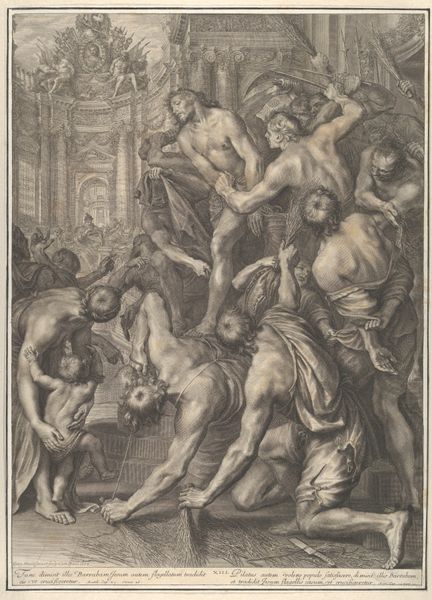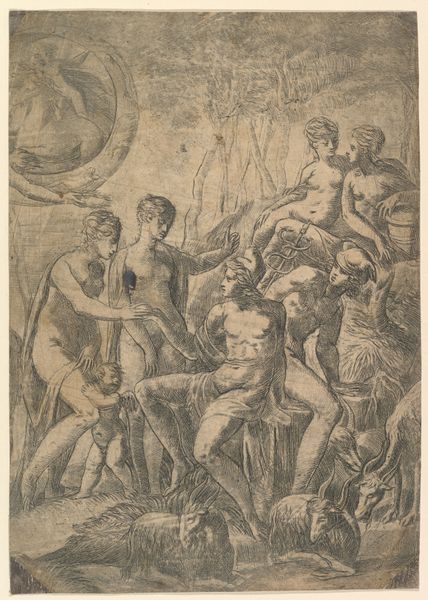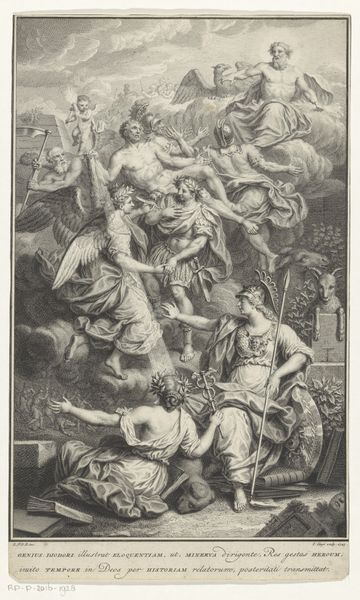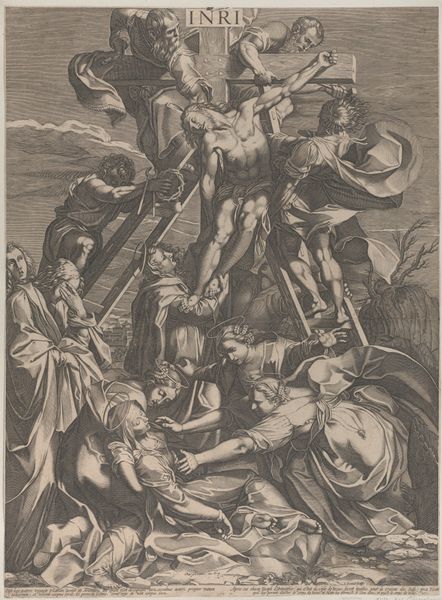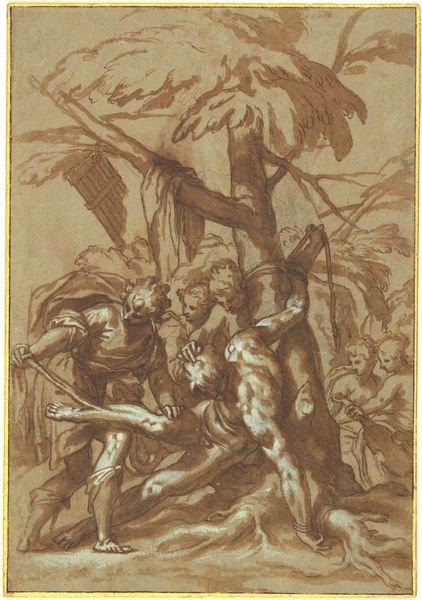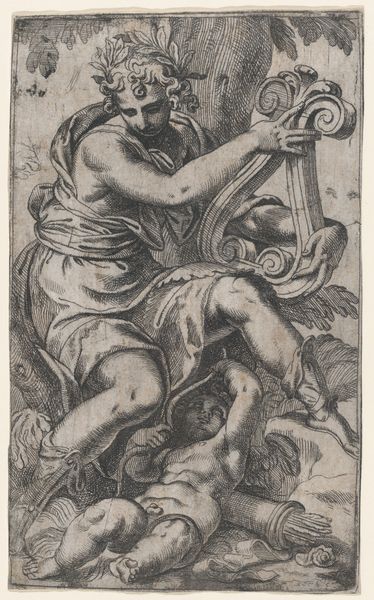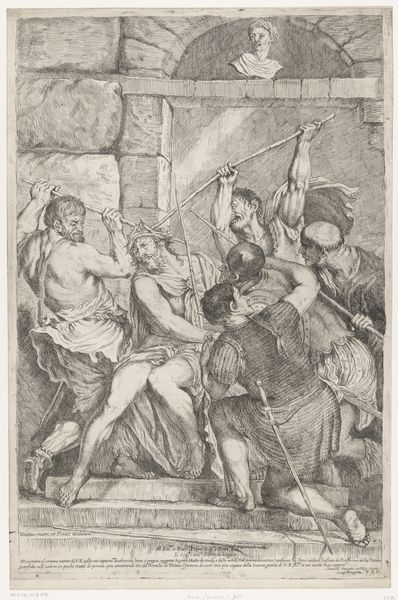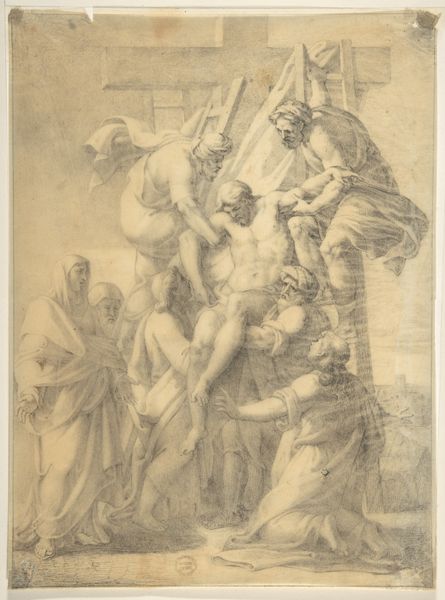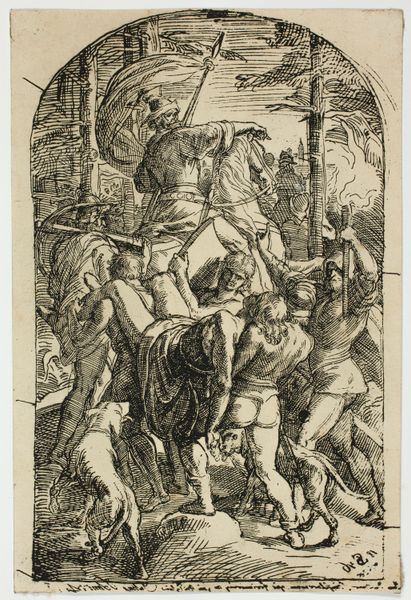
Christ standing at the right healing the lepers before him (left section of the print) 1540 - 1550
0:00
0:00
drawing, print, etching
#
drawing
#
narrative-art
# print
#
etching
#
figuration
#
men
#
history-painting
#
italian-renaissance
#
christ
Dimensions: sheet: 11 1/4 x 7 1/2 in. (28.5 x 19 cm)
Copyright: Public Domain
Curator: Here we have "Christ standing at the right healing the lepers before him," an etching made by Andrea Schiavone sometime between 1540 and 1550. What's your initial reaction? Editor: Chaos. And suffering, of course. There's an almost frenetic energy in the etching, with bodies piling up on each other. All directed towards this one figure standing on the right, presumably Christ. It looks incredibly physical. Curator: Indeed. The sheer volume of bodies packed into this relatively small space is significant. As an etching, this piece involves a labor-intensive process: the artist coats a metal plate with wax, draws into it, then immerses it in acid to eat away at the exposed lines. Schiavone's mastery is clear. The tools involved - the needles, acids, and presses - offer insight into the workshop practices of the Italian Renaissance. Editor: The most prominent figures are all male, arranged almost in a pyramidal composition. The man front and center kneels on the ground, drawing the viewer in. Leprosy, understood in this period as a disease separating one from God, plays out visually through suffering bodies reaching out to be touched by Christ's healing power. Curator: Precisely. Consider the paper itself— likely handmade— and how its texture interacts with the ink. These prints were often made in multiples, meant to circulate, to be traded and consumed. Did that accessibility cheapen the message or spread it? I wonder… Editor: Good point. And it makes one think about access and class. Who were the patrons who sought out such scenes and what meaning would they attribute to such visible, outward, markers of God's will and those who stood outside of it. What does that gesture, those outstretched hands towards the right represent? Yearning? Faith? Desperation? The visual language screams humanity's reliance on a higher power in the face of adversity. Curator: We’ve both highlighted distinct angles here, haven't we? The production of this image vis-a-vis its social implications is so clear through material, labor, market and tools of the Renaissance. Editor: And equally potent is the reading of these suffering figures yearning toward divine touch and hope in a time rife with conflict. The image resonates, not only for its artistry, but for its timeless message of suffering and redemption.
Comments
No comments
Be the first to comment and join the conversation on the ultimate creative platform.

